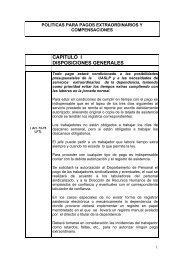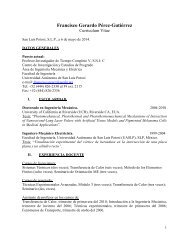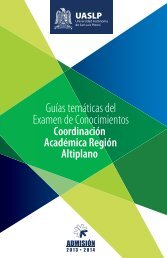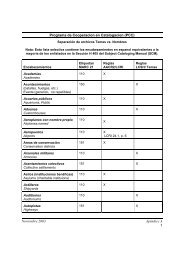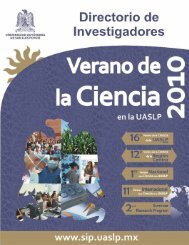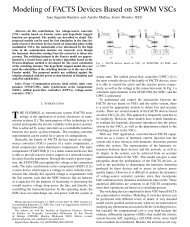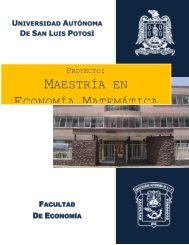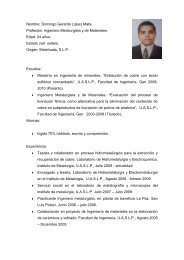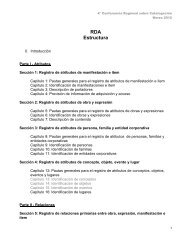Implementing the RSA cryptosystem with Maxima CAS - Facultad de ...
Implementing the RSA cryptosystem with Maxima CAS - Facultad de ...
Implementing the RSA cryptosystem with Maxima CAS - Facultad de ...
Create successful ePaper yourself
Turn your PDF publications into a flip-book with our unique Google optimized e-Paper software.
The Electronic Journal of Ma<strong>the</strong>matics and Technology, Volume 6, Number 1, ISSN 1933-28236. The <strong>de</strong>cryption function, fpri, A is <strong>the</strong> inverse of fpub A , that is:f A pri(m) = m d A(mod n A ).It is instructive to check that <strong>the</strong>se functions are in<strong>de</strong>ed inverses of each o<strong>the</strong>r.Theorem 6 For every m ∈ Z/n A Z,f A pri(f A pub(m)) ≡ f A pri(m e A) ≡ m e A·d A≡ m (mod n A ).Proof. For simplicity, we will drop <strong>the</strong> subscripts A. We can assume that m is not divisible 3 by p.Then, by Fermat’s Little Theorem (1),m p−1 ≡ 1 (mod p).Let us take <strong>the</strong> power of q − 1 on both si<strong>de</strong>s of this equation:m (p−1)·(q−1) = ( m p−1) q−1≡ 1 q−1 = 1 (mod p).A similar computation, interchanging p and q, givesm (p−1)·(q−1) = ( m q−1) p−1≡ 1 p−1 = 1 (mod q).We can apply <strong>the</strong> property 6 of modular arithmetic, to getNote that for any integer k we will also havem (p−1)·(q−1) = 1 (mod pq).m k·(p−1)·(q−1) = ( m (p−1)·(q−1)) k≡ 1 k = 1 (mod pq).Now, recall that e · d ≡ 1 (mod Φ(n) = (p − 1) · (q − 1)). That meansThus:e · d = 1 + k · (p − 1) · (q − 1).m e·d = m 1+k·(p−1)·(q−1) = m · m k·(p−1)·(q−1) ≡ m · 1 = m (mod pq),so m e·d ≡ m (mod n), as we inten<strong>de</strong>d to prove.Why is this method secure?. In <strong>the</strong> <strong>RSA</strong> <strong>cryptosystem</strong>, <strong>the</strong> public key of user A is <strong>the</strong> pair ofintegers (e A , n A ), while her private key is <strong>the</strong> pair (d A , n A ). To find <strong>the</strong> private key knowing <strong>the</strong>public key is equivalent to computing <strong>the</strong> integer d A knowing e A and n A . Thus, if we want to break<strong>the</strong> <strong>cryptosystem</strong>, we must first calculate Φ(n A ) = (p A − 1)(q A − 1), that is, we must factor n A as <strong>the</strong>product of two primes. This is an extremely difficult problem from <strong>the</strong> computational point of view;in<strong>de</strong>ed, a joint effort of several researchers using hundreds of <strong>de</strong>dicated computers only could factora 232−digit number after two years of computation (see [3]). Note that this number corresponds toa 768−bit encryption, <strong>the</strong> problem of factoring a 1024−bit key is a thousand times har<strong>de</strong>r! Thus,although breaking <strong>the</strong> <strong>RSA</strong> <strong>cryptosystem</strong> is <strong>the</strong>oretically possible, it is practically impossible <strong>with</strong>our current state of knowledge.3 That p divi<strong>de</strong> m is highly improbable, given <strong>the</strong> magnitu<strong>de</strong> or<strong>de</strong>r of <strong>the</strong> prime p.42



